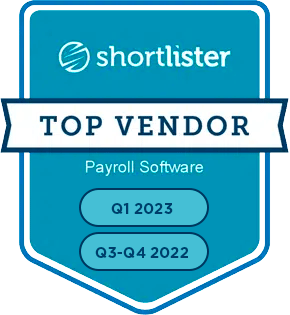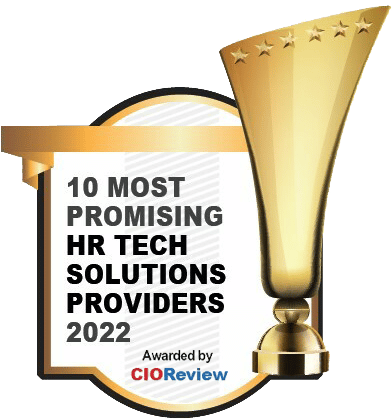The hospitality industry is built on exceptional customer service, with tipping playing a crucial role. For employers, managing tips involves navigating various complexities, particularly regarding payroll and compliance. From tip pooling to automatic gratuities, let’s delve into the different tip models, their pros and cons, and the key payroll considerations they entail.
Key Takeaways
- Tip Pooling Promotes Teamwork: This model fosters a sense of collaboration but can demotivate top performers due to shared tips.
- Individual Tip Retention Rewards Performance: This model encourages exceptional service but can lead to competition and income disparities.
- Automatic Gratuities Provide Consistency: Automatic gratuities ensure fair compensation for large groups but may be seen as presumptive by customers.
- Service Charges Guarantee Predictable Income: This model offers financial stability but can confuse customers.
- Digital Tipping Boosts Earnings: Going digital increases tips by up to 25%, though can cause discomfort in non-traditional tipping settings.
Tip Pooling: A Collective Approach
If you work in hospitality, you’ve likely encountered tip pooling. This method collects all tips and distributes them among the team, often including servers, bartenders, bussers, and sometimes kitchen staff. However, it comes with its own set of benefits and drawbacks to consider.
Pros:
- Fosters a sense of teamwork and ensures everyone, even those working behind the scenes, receives recognition and reward for their efforts, which could potentially reduce turnover and recruitment costs.
- Helps balance the wage disparity between front-of-house and back-of-house employees.
- Reduces competition among staff members, promoting a more harmonious work environment and boosting job satisfaction for all roles.
- Provides a consistent income for employees, making earnings more predictable and stable.
Cons:
- Employees might feel less motivated to deliver excellent service if they know their tips will be divided among the team.
- Top performers might feel demotivated when they have to share their tips with colleagues who aren’t putting in the same effort, potentially causing feelings of resentment.
- Administering a tip pool can get tricky with varying tip amounts and diverse team sizes.
- Calculating the exact share for each team member can be time-consuming and prone to errors, potentially leading to disputes.
Payroll Considerations:
- Federal regulations mandate that only employees who typically and regularly earn more than $30 per month in tips can be included in a tip pool.
- It’s crucial for payroll systems to accurately monitor tips distributed to each employee and perform precise tax calculations. Neglecting this aspect can result in serious compliance problems.
As a business owner, you’ll need to carefully manage employee dynamics to prevent dissatisfaction and disputes. Although this approach fosters teamwork, accurate calculations and meticulous record-keeping are crucial to avoid mistakes and keep everyone satisfied. Furthermore, AllianceHCM partners with earned wage access (EWA) providers to streamline tasks such as electronic tip management, end-of-shift or scheduled payouts, digital tip allocations, and providing employees with instant access to their earned wages on-demand.
Individual Tip Retention: Rewarding Performance
In the individual retention model, employees keep the tips they earn from their own customers. This approach is especially common in high-end settings like fine dining, where exceptional customer service and attention to detail can greatly influence tip amounts.
Pros:
- Employees receive tips based on their performance, motivating them to deliver exceptional service.
- Fosters personal responsibility and strengthens direct connections between employees and customers.
- Helps in maintaining transparency, as each employee knows exactly what they have earned.
- Encourages competition among staff, potentially elevating the overall service quality.
Cons:
- Can lead to internal competition, which might hurt team morale.
- Employees might focus solely on high-tipping guests, potentially neglecting others and impacting the overall customer experience.
- May encourage bullying or unhealthy competition, where employees are competing amongst themselves to secure higher spending customers.
- Front-line staff often earn significantly more than back-of-house employees, leading to income disparities.
Payroll Considerations:
- It’s crucial for employers to accurately track reported tips and withhold the necessary taxes. Despite employees being responsible for reporting their tips, employers must maintain precise records.
- Incorrectly reported or poorly tracked tips can result in significant penalties from the IRS or the Department of Labor.
- For individual tip retention, accurate payroll processing is key. Employees should use the IRS Form 4070 A to track their tips, ensuring proper documentation and correct taxable income.
- Employers must also consider IRS Form 8027. This is crucial for large food or beverage establishments to track tip allocation and ensure accurate reporting. Utilizing these forms properly helps avoid discrepancies and potential IRS penalties.
In the individual tip retention model, employees keep their earned tips without sharing. This motivates staff to deliver excellent service, offering clear earnings and simpler payroll processing. However, it can lead to staff competition and significant earning disparities. AllianceHCM offers specialized payroll tax services and has numerous clients in the hospitality space to streamline this process.
Automatic Gratuities: Ensuring Consistent Tips
As a business owner in hospitality, you’re likely familiar with automatic gratuities. This adds a preset percentage to a customer’s bill, often for large groups or special events but sometimes for all service. This ensures servers receive consistent tips, helping to maintain high service standards.
Pros:
- Ensures servers are adequately compensated for scenarios like large parties where tipping could otherwise be inconsistent.
- Allows customers to avoid calculating a tip, leading to quicker payment processing.
- Provides a standardized tipping experience, which can reduce disputes and ensure fairness for all parties involved.
Cons:
- Some customers may view automatic gratuities as presumptive and might resist the requirement to tip.
- Automatic gratuities may be classified as service charges rather than tips, depending on local regulations, affecting their tax treatment.
- This eliminates some of the financial incentive to provide exceptional service to customers, since gratuity is less likely to be determined by the customer.
Payroll Considerations:
- Automatic gratuities are treated as regular wages for tax purposes. This means they are subject to withholding and must be reported through payroll like regular earnings, not as tips.
- Payroll systems must differentiate between tips and automatic gratuities to ensure compliance with both IRS regulations and state labor laws.
Service Charges: A Non-Optional Model
Service charges are compulsory fees added to a bill, commonly used for specific services such as delivery, catering, or premium seating. Unlike tips, these charges are not optional.
Pros:
- With service charges, staff are assured a predictable amount of compensation, offering more financial stability.
- Employers can determine the distribution of service charges, promoting fairer pay between front- and back-of-house staff.
Cons:
- Service charges differ from tips, which can sometimes confuse both employees and customers.
- They might be viewed as an extra cost by customers, potentially lowering their satisfaction.
Payroll Considerations:
- Service charges are classified as regular income and must be processed as wages in payroll systems, including necessary tax withholdings.
- It’s crucial for employers to transparently communicate the allocation of service charges to employees and accurately categorize them in payroll systems to prevent any legal issues.
Digital Tipping in 2024
According to experts, total tips on their platform averaged 18.9% of total check amounts. Full-service restaurants saw an average tip of 19.4%, while quick-service restaurants averaged 16.1%. The presence of digital tipping prompts has contributed to the consistency of these tipping percentages. However, the increasing frequency of tipping prompts can sometimes lead to customer discomfort, especially in non-traditional tipping environments, potentially impacting their overall satisfaction.
A 2023 Bankrate survey highlighted that 66% of customers had at least one negative feeling when asked to tip at checkout, especially in places where tipping isn’t anticipated. While this approach can enhance employee earnings, it may also negatively impact overall customer experiences and statisfaction.
Considerations:
- Customer comfort and potential pressure
- Industry norms for tipping
- Impact on brand perception
- Employee satisfaction and fairness
- Transparency of tip distribution
- Ease of integration with payment systems
Conclusion
Choosing between tip pooling, individual retention, automatic gratuities, or service charges each has distinct advantages and disadvantages. Understanding the payroll implications and adhering to labor laws will help you make an informed choice that benefits your staff and boosts your bottom line.
For hospitality businesses, an efficient payroll system that accurately tracks tips, wages, and taxes is essential. With AllianceHCM, you can streamline your payroll processes, ensure compliance, and fairly compensate your employees, regardless of your tipping model.



